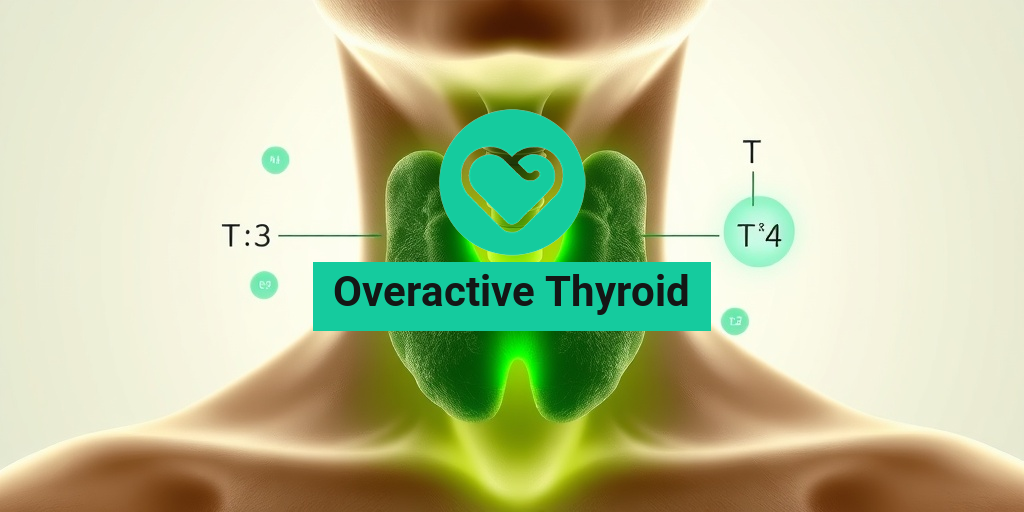What Are Cyclic Migraines?
Cyclic migraines are a unique and often debilitating form of migraine that occurs in a recurring pattern. Unlike typical migraines that may strike sporadically, cyclic migraines manifest in a predictable cycle, often lasting for several days or weeks before subsiding. This condition can significantly impact the quality of life for those affected, making it essential to understand its characteristics and triggers.
Typically, cyclic migraines are characterized by their episodic nature, where individuals experience a series of migraine attacks followed by a headache-free period. This cycle can vary in length and intensity, making it crucial for patients to monitor their symptoms closely. While the exact cause of cyclic migraines remains unclear, they are believed to be linked to genetic factors, hormonal changes, and environmental triggers.
Interestingly, cyclic migraines can affect individuals of all ages, including children and adults. In some cases, they may even present differently in men and women, with hormonal fluctuations playing a significant role, especially in women during their reproductive years or after menopause.
Cyclic Migraine Symptoms
Recognizing the symptoms of cyclic migraines is vital for effective management and treatment. The symptoms can vary from person to person, but there are common signs that many individuals experience:
- Severe Headaches: The hallmark of cyclic migraines is intense, throbbing headaches that can last from a few hours to several days. These headaches often occur on one side of the head.
- Nausea and Vomiting: Many individuals report feelings of nausea, and some may even experience vomiting during an attack.
- Light and Sound Sensitivity: Increased sensitivity to light (photophobia) and sound (phonophobia) is common, making it difficult to engage in daily activities during an episode.
- Visual Disturbances: Some people may experience aura symptoms, such as visual disturbances, before the onset of a migraine. This can include seeing flashes of light or experiencing blind spots.
- Fatigue and Mood Changes: After a migraine attack, individuals often feel exhausted and may experience mood swings, irritability, or depression.
It’s important to note that cyclic migraines can also lead to cyclic vomiting syndrome, where individuals experience repeated episodes of vomiting along with their migraine symptoms. This can be particularly distressing and may require specialized treatment.
If you suspect you are experiencing cyclic migraines, it’s essential to consult with a healthcare professional for an accurate diagnosis and personalized treatment plan. Resources like Yesil Health AI can provide evidence-based health answers and support for managing your condition.
In conclusion, understanding cyclic migraines is the first step toward effective management. By recognizing the symptoms and seeking appropriate care, individuals can take control of their health and improve their quality of life. If you or someone you know is struggling with cyclic migraines, don’t hesitate to reach out for help! 🌟

Cyclic Migraine Triggers
Cyclic migraines are a unique and often debilitating form of headache that can significantly impact a person’s quality of life. Understanding the triggers that can lead to these migraines is crucial for effective management and prevention. Here, we’ll explore some common triggers associated with cyclic migraines.
1. Hormonal Changes
For many individuals, hormonal fluctuations can play a significant role in triggering cyclic migraines. This is particularly evident in women, where changes in estrogen levels during menstruation, pregnancy, or menopause can lead to increased migraine frequency. Studies have shown that women are more likely to experience cyclic migraines during these hormonal shifts.
2. Stress and Anxiety
Emotional stress is another common trigger for cyclic migraines. The body’s response to stress can lead to tension in the muscles and changes in blood flow, which may precipitate a migraine attack. Techniques such as mindfulness, yoga, and regular exercise can help manage stress levels and potentially reduce the frequency of migraines.
3. Dietary Factors
Certain foods and beverages can also trigger cyclic migraines. Common culprits include:
- Processed Foods: Foods high in preservatives and additives.
- Caffeinated Beverages: Excessive caffeine can lead to withdrawal headaches.
- Alcohol: Particularly red wine and beer.
- Chocolate: A known trigger for many migraine sufferers.
Keeping a food diary can help identify specific dietary triggers for cyclic migraines.
4. Sleep Disturbances
Both lack of sleep and oversleeping can trigger cyclic migraines. Maintaining a consistent sleep schedule and ensuring adequate rest can help mitigate this risk. Aim for 7-9 hours of quality sleep each night to support overall health and reduce migraine occurrences.
5. Environmental Factors
Environmental changes, such as weather fluctuations, bright lights, and strong odors, can also trigger cyclic migraines. Sensitivity to these factors varies from person to person, so it’s essential to identify which environmental elements may provoke your migraines.
Cyclic Migraine Diagnosis
Diagnosing cyclic migraines can be challenging due to their similarity to other types of headaches. However, a thorough evaluation by a healthcare professional can help establish an accurate diagnosis. Here’s what to expect during the diagnostic process.
1. Medical History Review
Your healthcare provider will begin by taking a detailed medical history. This includes discussing your migraine symptoms, frequency, duration, and any potential triggers you’ve identified. Be prepared to answer questions about:
- Your family history of migraines.
- Any previous treatments and their effectiveness.
- Other medical conditions you may have.
2. Symptom Assessment
During the assessment, your doctor will evaluate the specific characteristics of your migraines. Cyclic migraines typically occur in a pattern, often lasting for several days followed by a headache-free period. This pattern is crucial for distinguishing cyclic migraines from other headache types.
3. Diagnostic Tests
In some cases, your doctor may recommend diagnostic tests to rule out other conditions. These tests can include:
- Imaging Studies: MRI or CT scans to check for structural issues in the brain.
- Blood Tests: To rule out other medical conditions that may mimic migraine symptoms.
4. Keeping a Migraine Diary
Maintaining a migraine diary can be an invaluable tool in the diagnostic process. Documenting the frequency, duration, and intensity of your migraines, along with any potential triggers, can provide your healthcare provider with essential information to make an accurate diagnosis.
In conclusion, understanding the triggers and diagnostic process for cyclic migraines is vital for effective management. By identifying personal triggers and working closely with a healthcare professional, individuals can take proactive steps toward reducing the frequency and severity of their migraines. 🌟

Cyclic Migraine Treatment Options
Cyclic migraines can be a debilitating condition, characterized by recurrent episodes of severe headaches that can last for days. Understanding the treatment options available is crucial for managing this condition effectively. Here, we’ll explore various treatment modalities that can help alleviate the symptoms of cyclic migraines.
Medications
Medications play a pivotal role in the treatment of cyclic migraines. They can be categorized into two main types: acute treatments and preventive treatments.
- Acute Treatments: These medications are used to relieve symptoms during a migraine attack. Common options include:
- Nonsteroidal anti-inflammatory drugs (NSAIDs) like ibuprofen or naproxen.
- Triptans, which are specifically designed to treat migraines by constricting blood vessels in the brain.
- Ergots, which can also help in aborting a migraine attack.
- Preventive Treatments: These are taken regularly to reduce the frequency and severity of migraine attacks. Options include:
- Beta-blockers, such as propranolol, which can help in reducing migraine frequency.
- Antidepressants like amitriptyline, which can also serve as preventive measures.
- Anticonvulsants, such as topiramate, which have shown effectiveness in preventing migraines.
Alternative Therapies
In addition to conventional medications, several alternative therapies may provide relief for those suffering from cyclic migraines:
- Acupuncture: This traditional Chinese medicine technique involves inserting thin needles into specific points on the body. Some studies suggest it may help reduce the frequency of migraines.
- Biofeedback: This technique teaches individuals to control physiological functions, such as muscle tension and heart rate, which can help in managing migraine symptoms.
- Herbal Supplements: Some people find relief using supplements like butterbur or feverfew, although it’s essential to consult a healthcare provider before starting any new supplement.
Lifestyle Modifications
Making certain lifestyle changes can also significantly impact the frequency and severity of cyclic migraines:
- Regular Sleep Schedule: Maintaining a consistent sleep routine can help prevent migraines triggered by sleep disturbances.
- Hydration: Staying well-hydrated is crucial, as dehydration can trigger migraines.
- Dietary Adjustments: Identifying and avoiding food triggers, such as aged cheeses, processed meats, or caffeine, can be beneficial.
Cyclic Migraine Management Strategies
Managing cyclic migraines involves a comprehensive approach that combines medical treatment with lifestyle adjustments. Here are some effective strategies to consider:
Keeping a Migraine Diary
One of the most effective ways to manage cyclic migraines is by keeping a migraine diary. This diary should include:
- The frequency and duration of migraine attacks.
- Potential triggers, such as specific foods, stress levels, or environmental factors.
- Medications taken and their effectiveness.
By tracking these details, you can identify patterns and triggers, which can help you and your healthcare provider tailor a more effective treatment plan. 📅
Stress Management Techniques
Stress is a common trigger for migraines. Incorporating stress management techniques into your daily routine can be beneficial:
- Meditation and Mindfulness: Practicing mindfulness can help reduce stress and improve overall well-being.
- Yoga: This gentle form of exercise can promote relaxation and reduce tension in the body.
- Deep Breathing Exercises: Simple breathing techniques can help calm the mind and body during stressful situations.
Regular Physical Activity
Engaging in regular physical activity can also help manage cyclic migraines. Exercise releases endorphins, which are natural pain relievers. Aim for at least 30 minutes of moderate exercise most days of the week. Activities like walking, swimming, or cycling can be particularly beneficial. 🏃♀️
Consulting a Specialist
If you find that your cyclic migraines are not responding to standard treatments, it may be time to consult a specialist. A neurologist or headache specialist can provide advanced treatment options and personalized care tailored to your specific needs.
In conclusion, managing cyclic migraines requires a multifaceted approach that includes medication, lifestyle changes, and alternative therapies. By understanding your condition and working closely with healthcare professionals, you can find effective strategies to reduce the impact of cyclic migraines on your life. 🌟

Cyclic Migraine vs. Other Headaches
When it comes to headaches, not all types are created equal. Among the various forms of headaches, cyclic migraines stand out due to their unique patterns and symptoms. Understanding how cyclic migraines differ from other headache types can help in managing them effectively.
What Are Cyclic Migraines?
Cyclic migraines are characterized by recurrent episodes of migraine attacks that occur in a predictable pattern. These episodes can last for days or weeks, followed by a period of remission where the individual experiences no headaches. This cyclical nature sets them apart from other types of migraines and headaches.
Comparing Cyclic Migraines to Other Headaches
- Chronic Migraines: Unlike cyclic migraines, chronic migraines occur more frequently, often more than 15 days a month. They can be debilitating and may not follow a predictable cycle.
- Tension-Type Headaches: These headaches are typically less severe than migraines and are often described as a tight band around the head. They do not usually involve the nausea or sensitivity to light that is common with cyclic migraines.
- Cluster Headaches: Cluster headaches are intense and occur in cyclical patterns, similar to cyclic migraines. However, they are usually shorter in duration and can happen multiple times a day during a cluster period.
- Cyclic Vomiting Syndrome: While not a headache, this condition is often associated with cyclic migraines. It involves recurrent episodes of severe vomiting, which can accompany migraine attacks.
Understanding these differences is crucial for effective treatment and management. If you suspect you have cyclic migraines, it’s essential to consult a healthcare professional for an accurate diagnosis and tailored treatment plan. 🩺
Cyclic Migraine Outlook and Prognosis
The outlook for individuals suffering from cyclic migraines can vary significantly based on several factors, including age, overall health, and response to treatment. Understanding the prognosis can help individuals manage their condition more effectively.
Long-Term Outlook
Many individuals with cyclic migraines experience a reduction in the frequency and severity of their attacks over time. Some may find that their migraines become less frequent as they age, while others may continue to experience them throughout their lives. Factors that can influence the long-term outlook include:
- Age: Some studies suggest that cyclic migraines may become less common after menopause in women.
- Response to Treatment: Effective management strategies, including medication and lifestyle changes, can significantly improve quality of life.
- Coexisting Conditions: Conditions such as anxiety or depression can exacerbate migraine symptoms, making it essential to address these issues as part of a comprehensive treatment plan.
Managing Cyclic Migraines
While there is no cure for cyclic migraines, several strategies can help manage symptoms and improve the overall prognosis:
- Medication: Preventive medications, such as beta-blockers or anticonvulsants, can help reduce the frequency of attacks.
- Lifestyle Modifications: Maintaining a regular sleep schedule, staying hydrated, and managing stress can help mitigate migraine triggers.
- Dietary Changes: Identifying and avoiding food triggers can be beneficial. Common triggers include aged cheeses, alcohol, and processed foods.
In conclusion, while cyclic migraines can be challenging, understanding their nature and implementing effective management strategies can lead to a better quality of life. If you or someone you know is struggling with cyclic migraines, seeking professional help is a crucial step toward finding relief. 🌟

Frequently Asked Questions about Cyclic Migraines
What are cyclic migraines?
Cyclic migraines are a type of headache disorder characterized by recurrent episodes of severe headaches that occur in a predictable pattern. These migraines can last for several days and may be accompanied by symptoms such as nausea, vomiting, and sensitivity to light and sound.
Who is most likely to experience cyclic migraines?
Cyclic migraines can affect individuals of all ages, but they are often seen in children and adolescents. They can also occur in adults, including men and women experiencing hormonal changes, such as those after menopause.
What triggers cyclic migraines?
Common triggers for cyclic migraines may include:
- Stress and anxiety
- Hormonal changes
- Certain foods and beverages
- Sleep disturbances
- Environmental factors, such as weather changes
How are cyclic migraines diagnosed?
Diagnosis typically involves a thorough medical history and physical examination. Doctors may also use diagnostic criteria from the International Classification of Headache Disorders to confirm the diagnosis of cyclic migraines.
What treatments are available for cyclic migraines?
Treatment options for cyclic migraines may include:
- Medications for pain relief, such as NSAIDs or triptans
- Preventive medications to reduce the frequency of attacks
- Lifestyle modifications, including stress management and dietary changes
Can children experience cyclic migraines?
Yes, cyclical migraines in children are a recognized condition. Symptoms may differ from those in adults, and it is essential for parents to consult a healthcare professional for proper diagnosis and management.
Are there any links between cyclic migraines and cyclic vomiting syndrome?
Yes, there is a connection between cyclic migraines and cyclic vomiting syndrome migraines. Both conditions can occur together, and individuals may experience episodes of severe headaches along with recurrent vomiting.
How can I manage cyclic migraines at home?
Home management strategies may include:
- Keeping a headache diary to identify triggers
- Staying hydrated and maintaining a balanced diet
- Practicing relaxation techniques, such as yoga or meditation
- Ensuring adequate sleep and rest
When should I see a doctor for cyclic migraines?
If you experience frequent or severe headaches that disrupt your daily life, it is important to consult a healthcare professional. Early intervention can help manage symptoms and improve your quality of life.
Are there any support groups for cyclic migraines?
Yes, there are various online communities and support groups, such as those found on platforms like Reddit, where individuals can share their experiences and coping strategies related to cyclic migraines. Connecting with others can provide valuable support and information.




